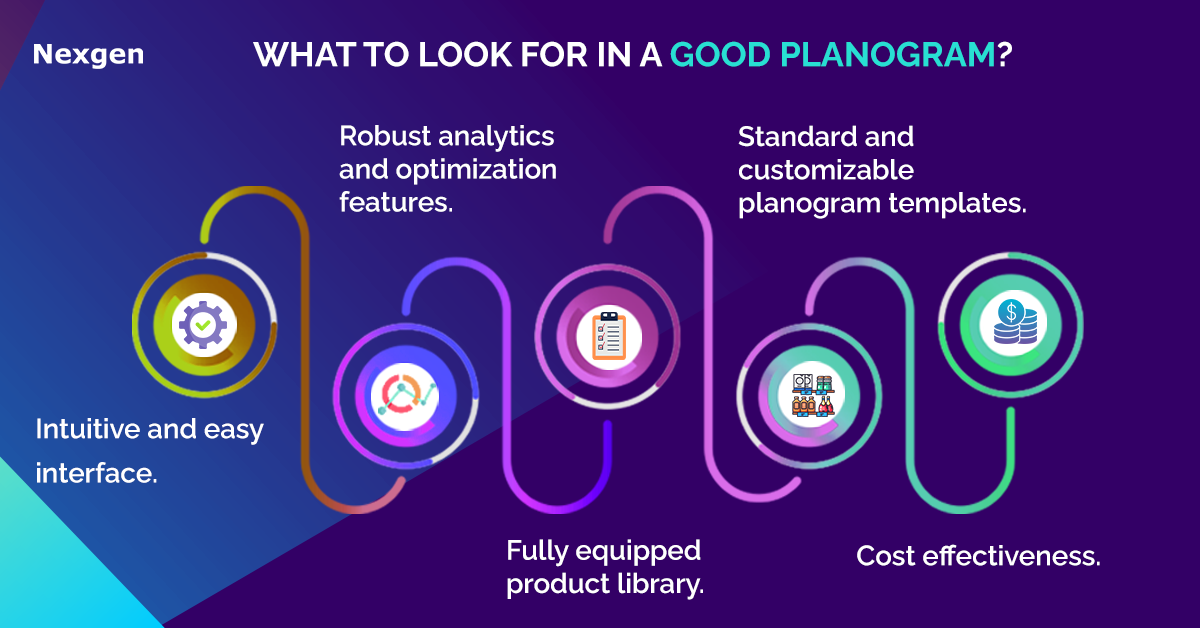A retail store's success is determined by a complicated collection of criteria, beginning with design and production technologies, progressing through the selection of suitable suppliers and logistical partners to an efficient sales and marketing strategy. One critical component of the approach that is often forgotten is how the products are displayed on the shelves of a retail store. This is where planograms come in. A planogram is a schematic drawing used for thorough planning of how and where products should be placed in retail stores to maximize product visibility. They boost sales and minimize waste for store owners and product manufacturers when utilized correctly for visual merchandising and space planning.
Planograms can be made using a variety of instruments, ranging from a piece of paper and a pen to specialized planogram design software. As the degree and criteria of planogram creation have grown, many retailers now rely on professionals that provide planogram services, such as planogram specialists, visual merchandisers, and retail space designers who specialize in various aspects of creating a compelling retail experience. Getting the correct space allocation within the floor area for each category and department is critical to gaining higher revenue and income. Planogram service providers assist in identifying the performance contribution of every square inch of store area and provide actionable insights with recommendations for change.
Confused about choosing the right planogram for your store? Read on to get a clear picture of the important features of good planogram software.

- Intuitive and easy interface: The right planogram generation software should be simple to use, manage, and update. Above all, it should interact with a store's inventory, active promotions, and sales data. Although 3D representation of retail displays is an appealing feature of planogram software, it is not required. However, functions like drag and drop, dynamic display of product attributes, and the ability to create planograms in both floor plan view and merchandise display, with real-time suggestions of ideal placement for products, are reasonable requirements.
- Planogram templates: Particularly for big stores that are a part of a retail chain, having a library of reusable merchandising templates that have been proven successful can result in significant operational cost savings. Smaller merchants may find it easy to increase sales and enhance return on store space investments by having access to ready-to-use efficient planogram templates. Planogram templates can be of two types: Stand templates and customizable templates. Standard templates are pre-designed templates that can be rapidly edited by retailers to create planograms. It helps retailers avoid creating a new template for each specific time period. Anytime he wants, he can fix a typical template for carrying out the store shelf. Customizable templates are templates created by retailers to plan their retail shelves. It is an efficient way to plan according to his concepts, real-time data and according to changing trends and consumer behavior aspects. It allows the retailer to custom design the planogram, by calculating the width, height, depth, shelf and section numbers. Also, a retailer can decide about the product type, product category and number of products that he specifically wants on the shelf.
- Product library: A product library containing precise characteristics for each SKU, such as package type and dimensions, facings, storage conditions, shelf life and proposed categories would be a vital component. A well-designed planogram software should also have a library of display fixtures that are adaptable to the retail store's present inventory.
The Product library feature makes it simple to gather and organize all the information required to create a retail planogram. This function also provides users with access to all product information that other software users have gathered and stored in the database. They can also manually search for product information based on any basic criterion.
- Integration: For a complete space planning solution, most retailers utilize planogram software in combination with store planning and range planning. It is critical to select space planning software that includes all three applications on a single software platform. One platform and one user interface for all space planning applications. This removes time-consuming processes like upgrading each program individually, switching between applications, and the learning process. The right integrations with other software can help individual departments and the entire business stay in synch.
Overview of Nexgen Planogram Services
Nexgen offers store-specific planograms for clients that optimize sales and achieve category objectives. We create customized planograms for your business to ensure that these are better aligned with your goals and merchandising strategies. Our expertise in planogram automation helps us build planograms faster, better and consistently. Whether it is creating a planogram from scratch, or a typical reset, we have the knowledge, tools, and experience to get the job done for you.
Get Your Free Trial Now!